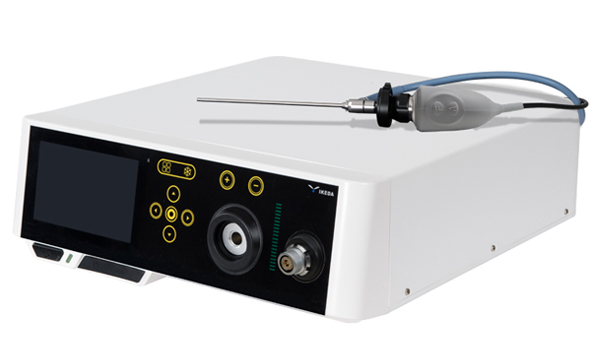The medical endoscope camera system is suitable for general departments, and is suitable for various endoscope fields such as otoscope, sinusoscope, nasopharyngoscope, laparoscope, hysteroscope, arthroscopy, intervertebral foraminoscope, fiber bronchoscope and so on. With the continuous development of medical technology, medical endoscope technology is also constantly improving. Let's understand the development history of medical endoscope camera system and learn more about medical endoscope camera system.
The development history of medical endoscope camera system
1. The rigid endoscope stage (1806--1932): The rigid endoscope stage was pioneered by German Philipp Bozzini. It consists of a vase-shaped light source, candles and a series of lenses, and is mainly used for bladder and urethral examination. The rigid endoscope developed by Rosenhein in 1895 consists of three tubes arranged in concentric circles. In 1911, Elsner made improvements to the Rosenhein gastroscope, but the inability to observe after the lens was dirty became a major defect. Despite this, the Elsner gastroscope was still in command before 1932.
2. Semi-flexed endoscope stage (1932—1957): Schindler cooperated with the excellent instrument operator Georg Wolf to develop a gastroscope in 1928, and finally succeeded in 1932, named Wolf-Schinder gastroscope. After that, everyone It has been modified to make it more complete and practical.
3. Optical fiber endoscope stage (1957 to present): In 1954, British Hopkins and Kapany invented optical fiber technology. In 1957, Hirschowitz and his assistants demonstrated a self-developed optical fiber endoscope at the American Society of Gastroscopy. In the 1960s, Olympas of Japan used external cold light sources to greatly increase the brightness and further expand the field of vision. With the continuous improvement of accessory devices in the past 10 years, fiber endoscopes can be used not only for diagnosis but also for surgical treatment.
4. The era of electronic endoscopes (after 1983): In 1983, WelchAllyn successfully developed an electronic video camera endoscope with a high-sensitivity miniature camera mounted on the front end of the lens, which used electrical signals to record the images Pass to the TV information processing system, and then convert the signal into an image that can be seen on the TV monitor.
Composition of medical endoscope camera system
The medical endoscope camera system consists of an endoscope optical interface, a camera and a camera system. The camera system is composed of a camera, a power cord and various connecting lines; the current camera has a single-chip camera and a three-chip camera; the optical interface of the endoscope is suitable for: cystoscope, laparoscope, sinusoscope, support laryngoscope, otoscope, and palace Endoscopes such as endoscopes.
The role of medical endoscope camera system
1. Light guide, lead the light from a strong external light source into the organ to illuminate the examination site;
2. Image guide, which transmits the images that reflect the endoscopic conditions of the organs. Through the monitor, it is convenient for the doctor to observe the clear and detailed intracavitary tissues, which provides protection for the doctor's safe operation and fine operation.
The above briefly introduces the development history of medical endoscope camera system, more welcome to consult!
